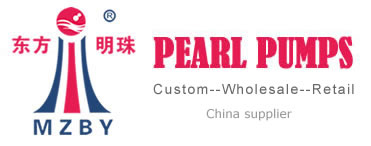Diaphragm pump operation precautions
1. Ensure that the largest particles contained in the fluid do not exceed the maximum safe passing particle diameter standard of the pump.
2. The inlet pressure should not exceed the maximum allowable operating pressure of the pump. Compressed air higher than the rated pressure may cause personal injury and property loss and damage the performance of the pump.
3. Ensure that the pump pressure pipeline system can withstand the highest output pressure achieved and ensure the cleanliness and normal working conditions of the drive air system.
4. Static sparks may cause explosions, resulting in personal casualties and property losses. Use wires with a large enough cross-sectional area as needed to properly and reliably ground the grounding screw on the pump.
5. Grounding requirements must comply with local regulations, legal requirements and some special requirements on site.
6. Fasten the pump and each connecting pipe joint to prevent static sparks caused by vibration, impact and friction. Use antistatic hose.
7. Periodically check and test the reliability of the grounding system, and the grounding resistance is required to be less than 100 ohms.
8. Maintain good exhaust and ventilation, and keep away from flammable, explosive and heat sources.
9. The exhaust from the pump may contain solid matter. Do not point the exhaust port toward the work area or people to avoid personal injury.
10. When the diaphragm fails, the transported materials will be ejected from the exhaust muffler.
11. When transporting flammable and toxic fluids, please connect the discharge outlet to a safe place away from the work area.
12. Please use a pipe with an inner diameter of at least 3/8" and a smooth inner wall to connect the exhaust port and the muffler.
13. The high pressure of the fluid may cause serious personal injury and property damage. Please do not perform any maintenance work on the pump and material pipe system when the pump is pressurized. If maintenance is required, cut off the pump first.
Cut off the air inlet to the pump, open the bypass pressure relief mechanism to relieve pressure on the pipeline system, and slowly loosen the connected pipe joints.
14. If the pump transports harmful and toxic fluids, please do not send the pump directly to the manufacturer for repair. Properly handle it in accordance with local laws and regulations.
15. Pumps that use aluminum alloy materials for the liquid delivery part should not be used to deliver liquids containing Fe3+, halogenated hydrocarbons and other halogenated hydrocarbon solvents. Otherwise, corrosion will occur and the pump will be damaged.
The body explodes.
16. Ensure that all parts that contact the conveyor body will not be corroded and damaged by the conveyed fluid.
17. Ensure that all operators are familiar with the operation and use of the pump and understand the precautions for safe use of the pump. If necessary, provide necessary protective equipment.
18. Use the pump correctly and do not allow it to run dry for a long time.
- Stainless steel pumps will soon become the leading product in the world's pump industry[ 2015-09-05 ]
- Source of water pump[ 2014-08-17 ]
- Advantages of horizontal centrifugal pumps[ 2014-12-01 ]
- Analysis of the reasons why the centrifugal pump cannot pump water[ 2019-09-24 ]
- Self Priming Centrifugal Pump--PEARL Pump[ 2024-04-11 ]
- What is the development prospect of screw pumps in the field of vacuum pumps?[ 2014-11-13 ]
- Disassembly and assembly of screw pump[ 2017-01-04 ]
- Centrifugal Pump Services Ltd: Your Reliable Partner for Pump Maintenance and Repair[ 2024-04-11 ]




